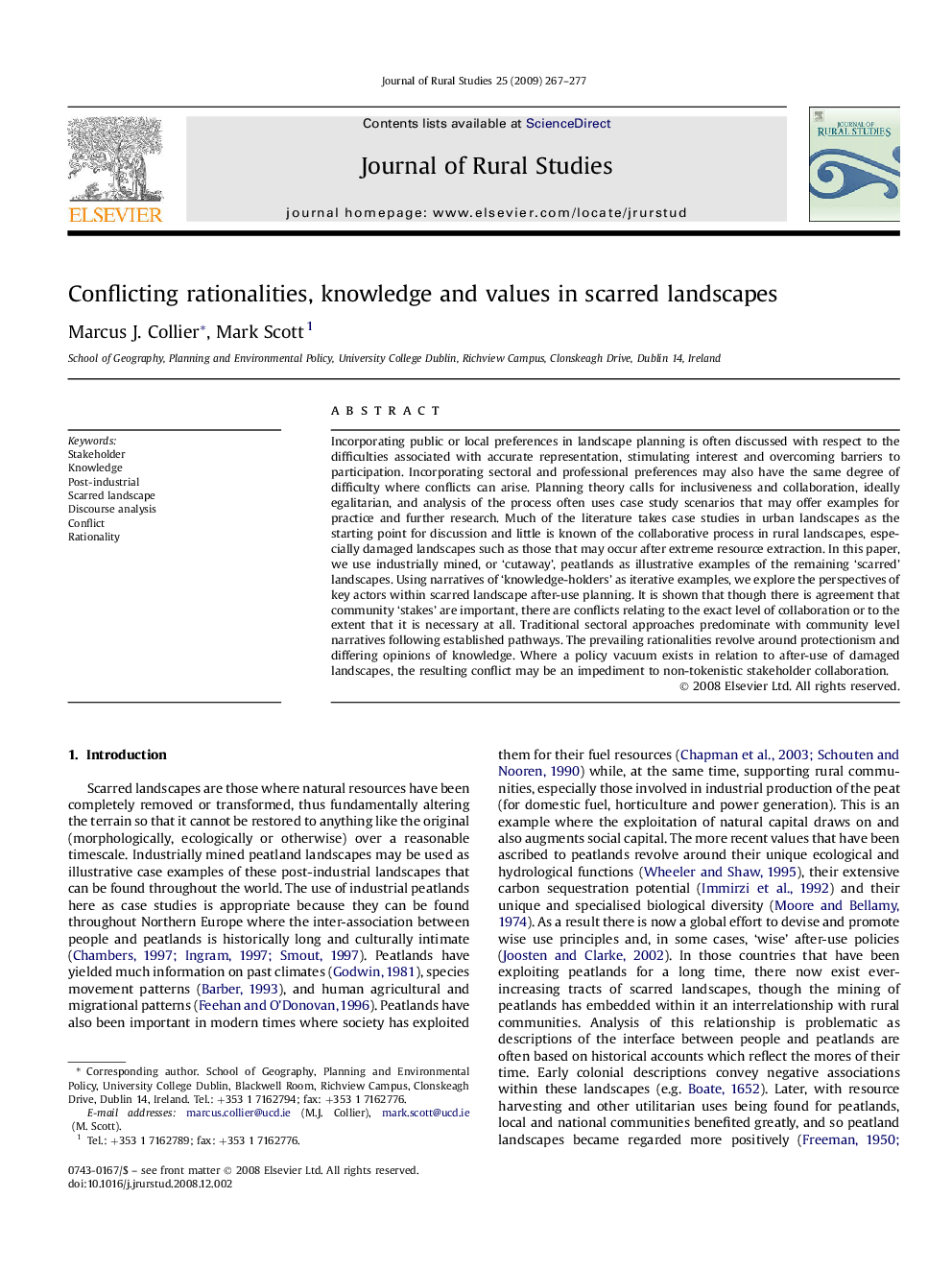| Article ID | Journal | Published Year | Pages | File Type |
|---|---|---|---|---|
| 92645 | Journal of Rural Studies | 2009 | 11 Pages |
Incorporating public or local preferences in landscape planning is often discussed with respect to the difficulties associated with accurate representation, stimulating interest and overcoming barriers to participation. Incorporating sectoral and professional preferences may also have the same degree of difficulty where conflicts can arise. Planning theory calls for inclusiveness and collaboration, ideally egalitarian, and analysis of the process often uses case study scenarios that may offer examples for practice and further research. Much of the literature takes case studies in urban landscapes as the starting point for discussion and little is known of the collaborative process in rural landscapes, especially damaged landscapes such as those that may occur after extreme resource extraction. In this paper, we use industrially mined, or ‘cutaway’, peatlands as illustrative examples of the remaining ‘scarred’ landscapes. Using narratives of ‘knowledge-holders’ as iterative examples, we explore the perspectives of key actors within scarred landscape after-use planning. It is shown that though there is agreement that community ‘stakes’ are important, there are conflicts relating to the exact level of collaboration or to the extent that it is necessary at all. Traditional sectoral approaches predominate with community level narratives following established pathways. The prevailing rationalities revolve around protectionism and differing opinions of knowledge. Where a policy vacuum exists in relation to after-use of damaged landscapes, the resulting conflict may be an impediment to non-tokenistic stakeholder collaboration.
